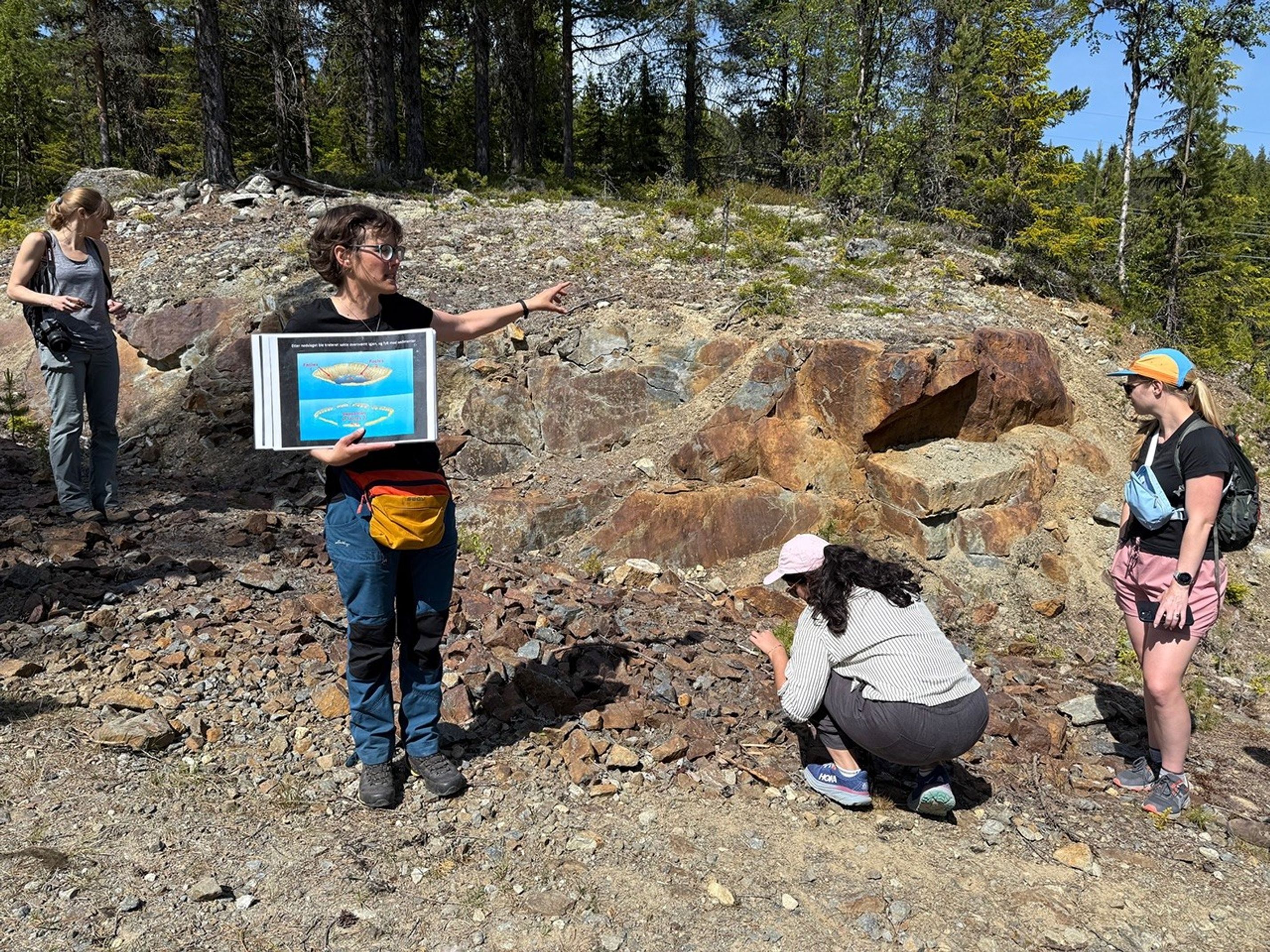The Sol 26 drive went well, and the images taken after the drive showedsome interesting outcrops right in front of the rover.
The Sol 26 drive went well, and the images taken after the drive showed
some interesting outcrops right in front of the rover. The focus of the
Sol 27 plan is primarily the first sampling of Mars' atmosphere by the big
SAM instrument, so there wasn't much time to do anything else. Now that
ChemCam is working again, the top priority is to acquire better
observations of its calibration target, and 77 minutes were allocated to do
that. But when we saw the new outcrop target, the science team wanted to
take pictures and zap it with ChemCam's laser. So Steve Squyres, the
Mineralogy Science Theme Group Lead for today, asked the Tactical Uplink
Lead (Pauline Hwang) whether she would be willing to consider adding more
time to the plan for additional scientific observations. Steve is the PI
of the Athena science payload on the Mars Exploration Rovers, and because
Pauline used to work on MER, they already know each other. Steve's plea
was well enough received that Pauline agreed to give the science team 40
more minutes to work with. There was much rejoicing, and Mastcam and
ChemCam observations of the outcrop were added to the plan. When I left
JPL a couple hours ago, it appeared that they would be approved and
included in the commands to be sent to MSL early tomorrow morning.
I wasn't scheduled in a tactical role today, but I couldn't resist spending
most of my day at JPL. MSL mission operations are just too much fun to
miss! Because I didn't have to focus on today's planning as much, I was
able to catch up on some other tasks, including processing new MARDI images
to determine how much they can be compressed and still preserve the details
needed for geologic interpretation. I also looked at some older ChemCam
RMI images that were taken in the MSL testbed (a nearly identical copy of
the real rover at JPL) to test various types of image compression. I had
been meaning to get this done long ago, but was too busy with other work.
So far it looks like we will be able to reduce the size of these images
without significantly degrading them. We must make the most of the
precious bits we receive from MSL through the Mars orbiters, so I need to
complete this analysis soon.
Ken
Written by Ken Herkenhoff, Planetary Geologist at USGS Astrogeology Science Center






























